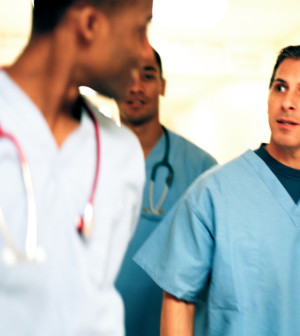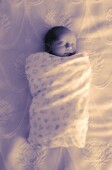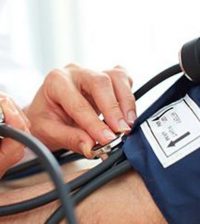- Good Blood Pressure Control Could Prevent Fibroids
- AI Matches Experts in Spotting Radiology Errors
- Melatonin Gummies to Get Safety Labeling, Child-Safe Bottles After Poisonings
- CDC Warns of 19 Cases of Botched Botox Shots in 9 States
- A More Diverse Nature Brings Better Mental Health
- Blinking: It’s About More Than Moistening the Eye
- Brain’s Cerebellum Could Help Direct Prosthetic Limbs
- Complications in Pregnancy Linked to Long-Term Health Risks for Women
- ‘One and Done’: Scientists Develop Vaccine That May Fight Any Viral Strain
- Walking Your Way to Better Health
Unsupervised Home Births on the Rise: Study


Home births without a midwife or doctor present — which have been linked to increased risk of infant death and disease — have jumped 79 percent in the United States in recent years, researchers report.
The actual number of unsupervised births is small, with about 5,000 reported in 2007 and more than 8,800 reported in 2012, said study author Dr. Amos Grunebaum, director of obstetrics at New York-Presbyterian Hospital.
But, “I would call that [increase] concerning,” added Grunebaum, who is also a professor of clinical obstetrics and gynecology at Weill Cornell Medical College in New York City. “Unattended home births are usually associated with adverse outcomes.”
His team is to present its findings at the American College of Obstetricians and Gynecologists’ annual meeting, to be held May 2-6 in San Francisco. Research presented at medical meetings is viewed as preliminary until published in a peer-reviewed journal.
For the study, the researchers turned to the U.S. Centers for Disease Control and Prevention database on birth certificates. They defined unsupervised home births as those not attended by a physician, midwife or other doctor.
From 2007 to 2012, more than 24 million births occurred in the United States. Of those, about 141,000 were home births. And about 30 percent of the home births were unsupervised.
The increase in unsupervised home births was higher in women who had already had other children (82 percent), compared with women who were having their first child (65 percent).
But one expert said the study was flawed because it did not take into account all the reasons why a birth might be unsupervised.
“The study is incomplete in that it doesn’t answer why there was an increase in unattended birth,” said Dr. Paul Burcher, an associate professor of obstetrics and gynecology and bioethics at Albany Medical College in Albany, N.Y. He speculated that it could reflect an increase in the so-called “free birth” movement, in which prospective parents choose unassisted home births.
Another possibility is that some of the births were attended by midwives in states that do not allow them, he said, so the parents had to sign the birth certificates.
“You can’t capture what’s going on with home births with birth-certificate data,” Burcher said, because some unsupervised births may not have been planned. For instance, a baby may have arrived too fast for the mother to get to the hospital, he added.
Grunebaum said the researchers have no data on which women actually chose unsupervised deliveries. “But we are concerned” about the trend, he said. Risks of unsupervised home births include newborn death and other complications, he added.
Guidelines from the American College of Obstetricians and Gynecologists (ACOG) state that hospital and birthing center births are safer. Women who still choose to plan a home birth should be generally healthy, not carrying twins or other multiples, and meet other criteria, ACOG recommends, and should seek assistance from midwives or physicians.
“I would not recommend home birth,” Grunebaum added. “I don’t think it’s safe.”
Women who want less intervention and a more home-like setting can request that at the hospital, he said, where emergency personnel and equipment are available if needed.
More information
To learn more about certified professional midwives, visit U.S. National Association of Certified Professional Midwives.
Source: HealthDay
Copyright © 2024 HealthDay. All rights reserved.










